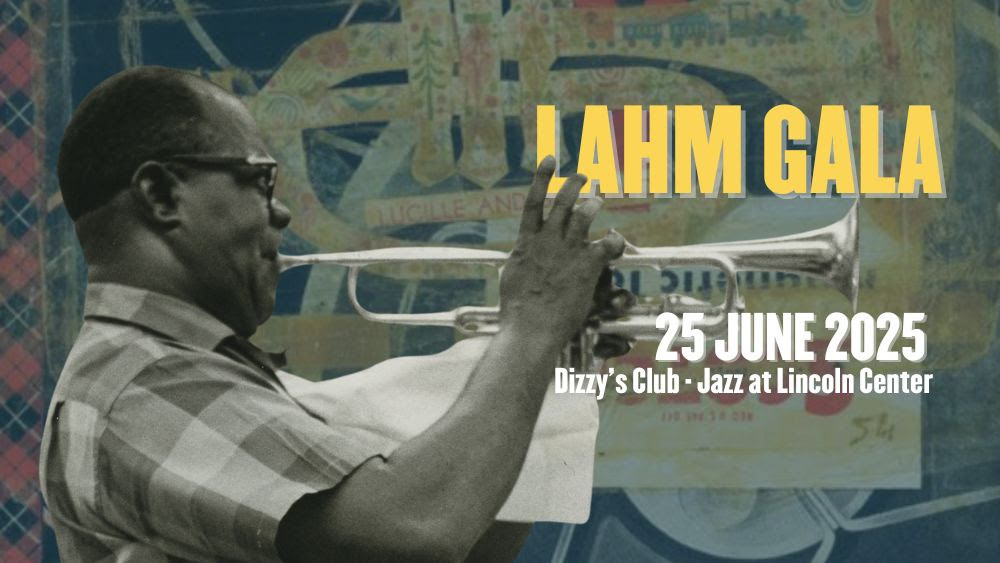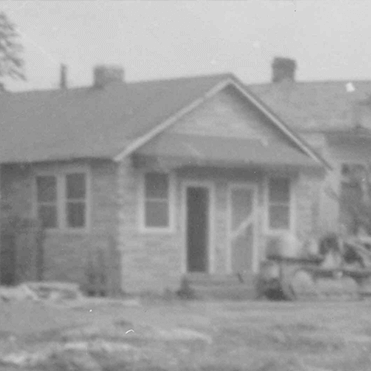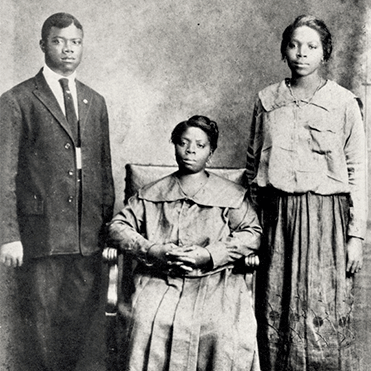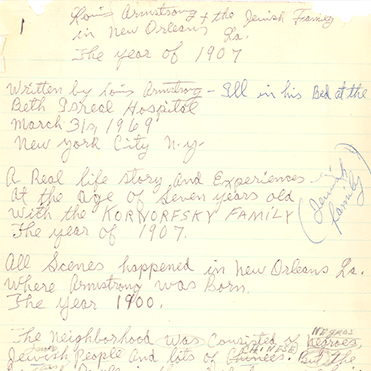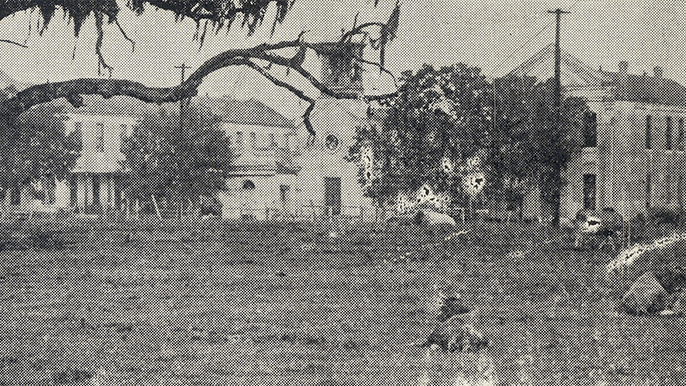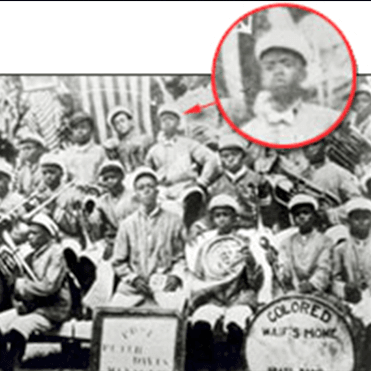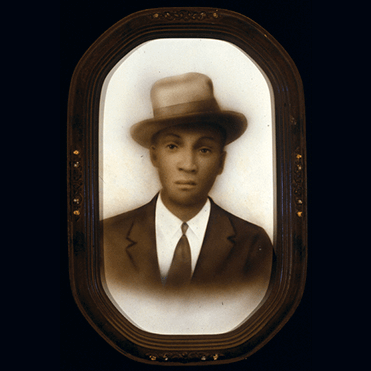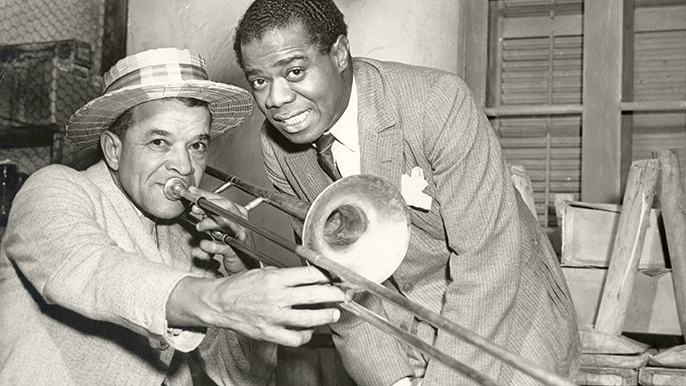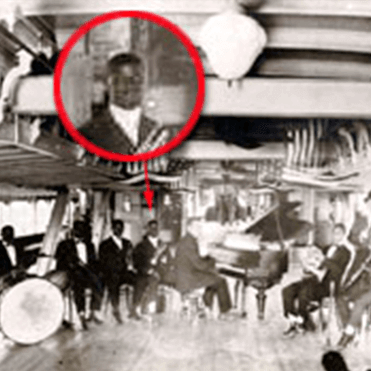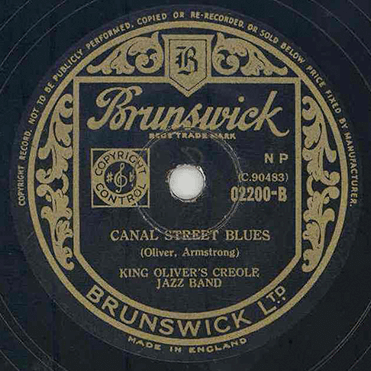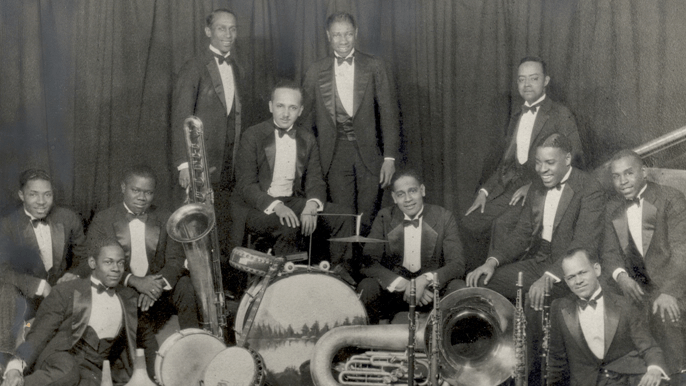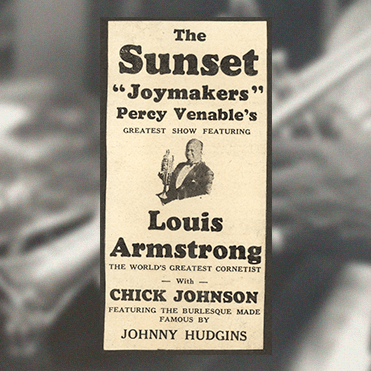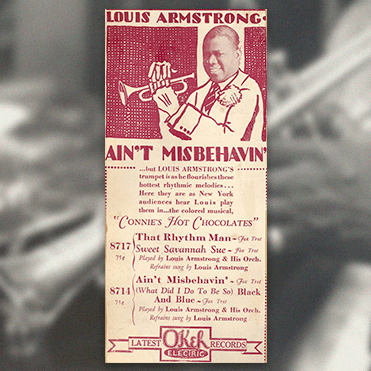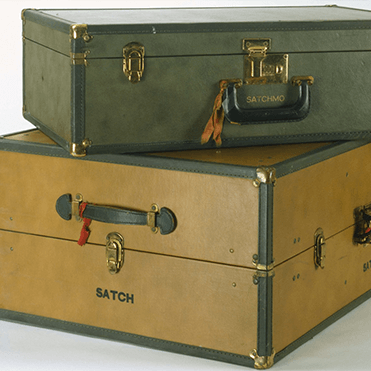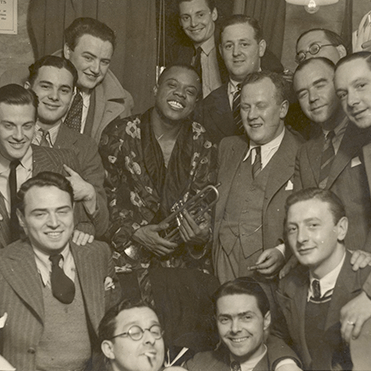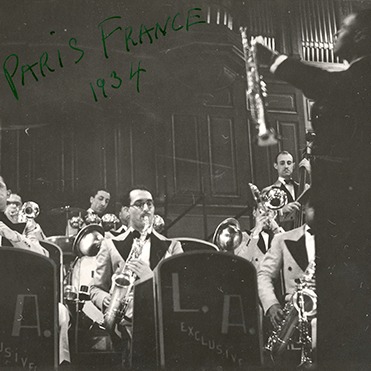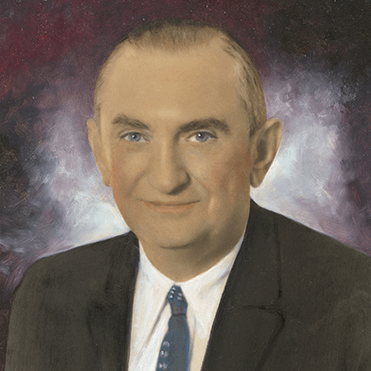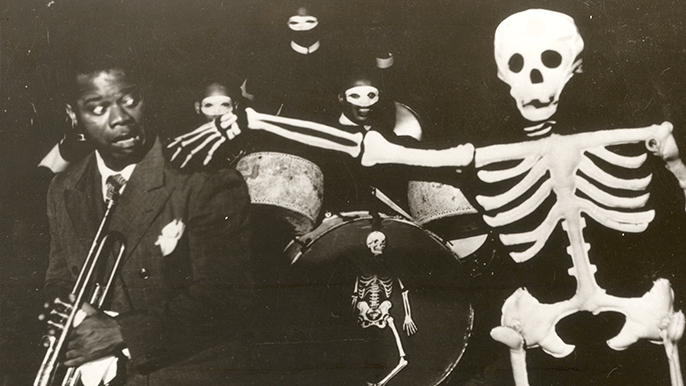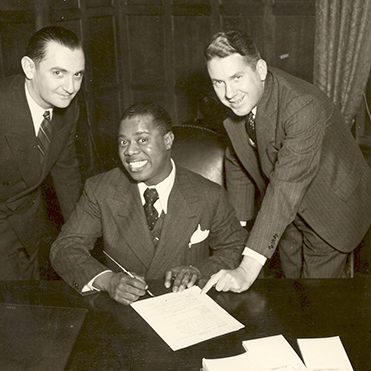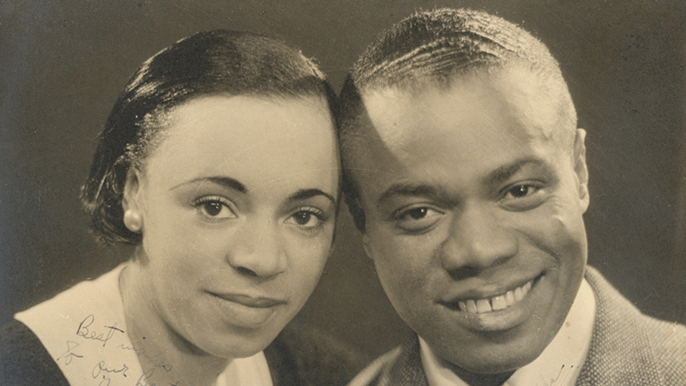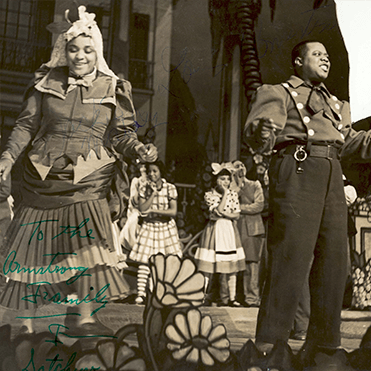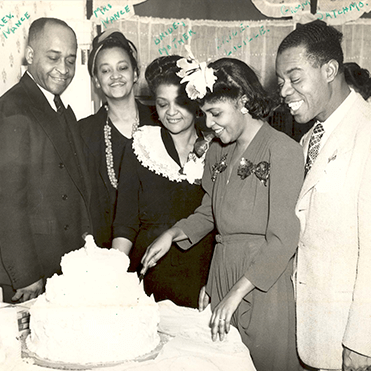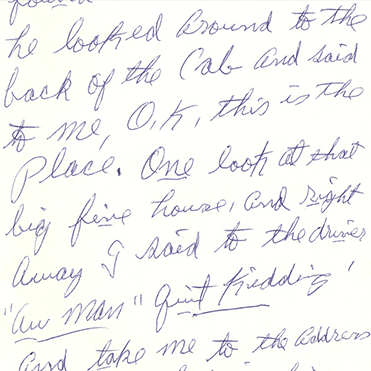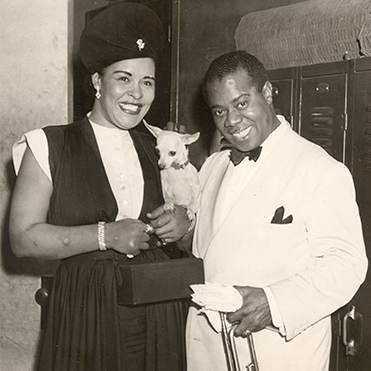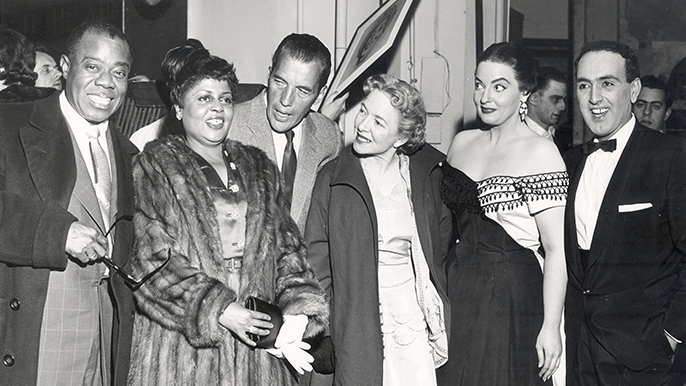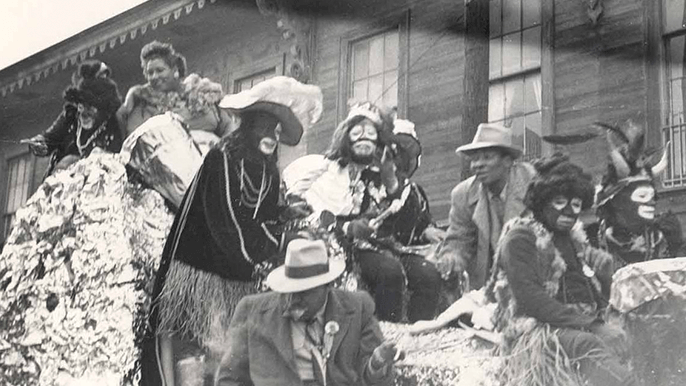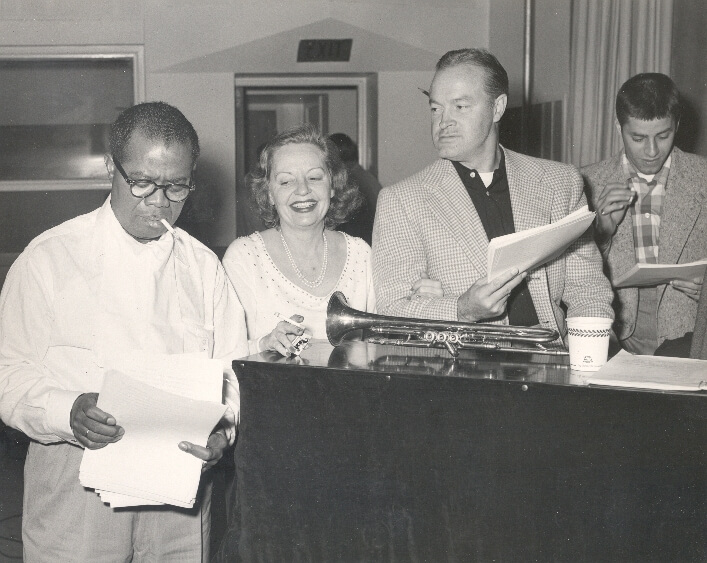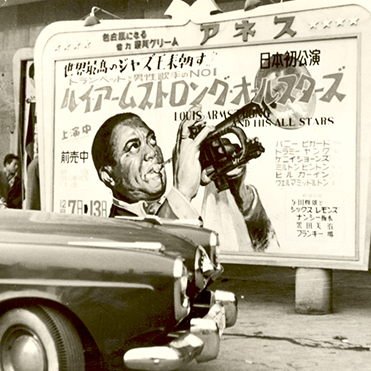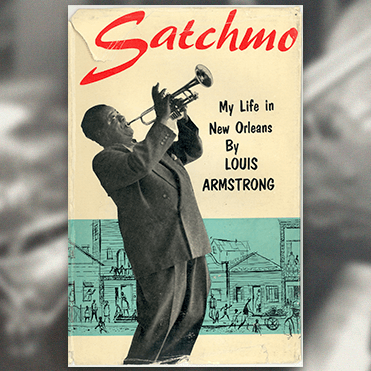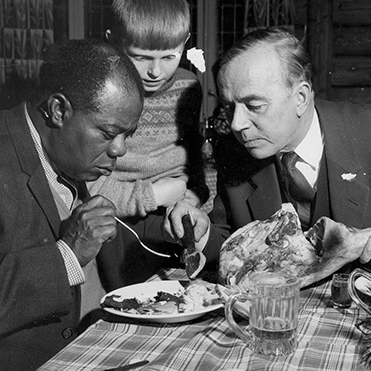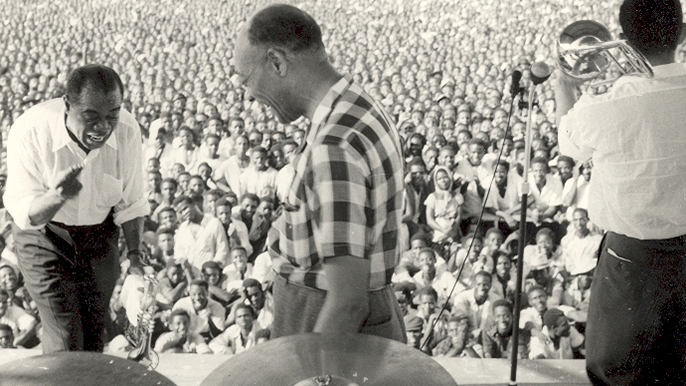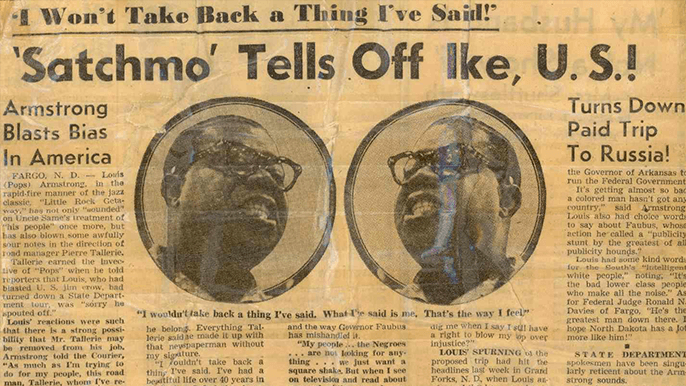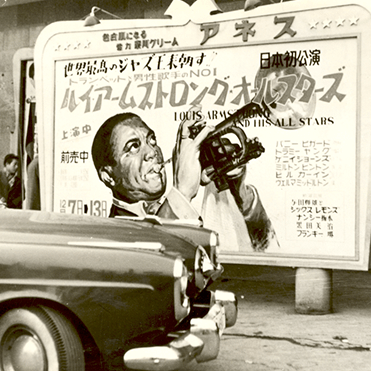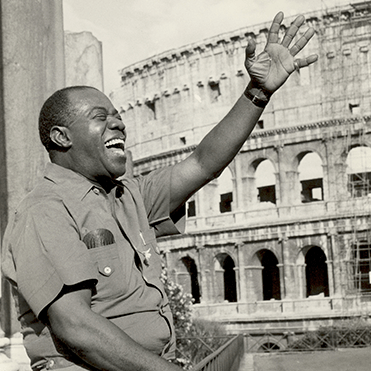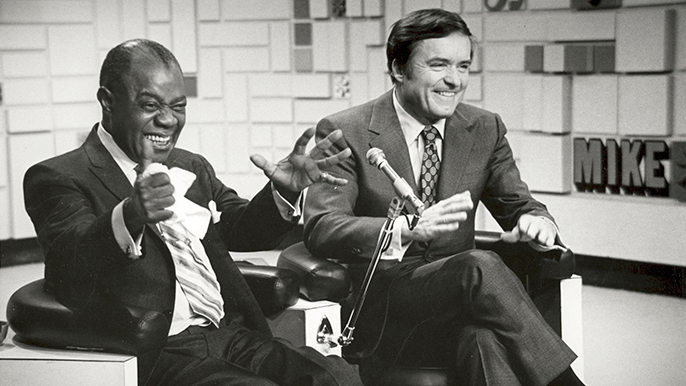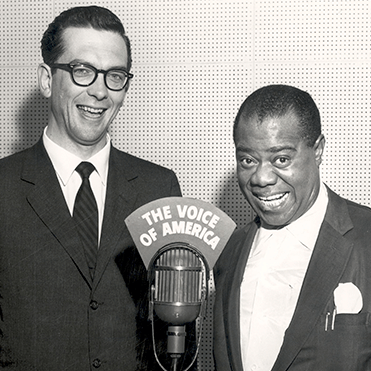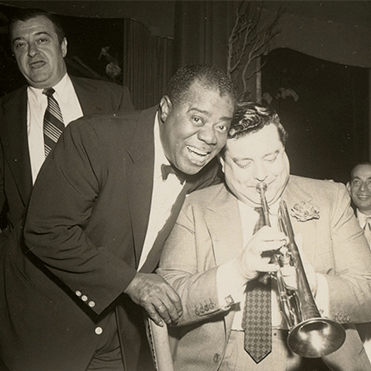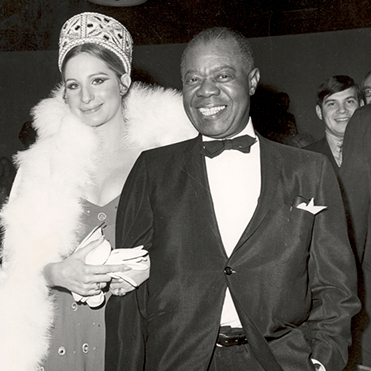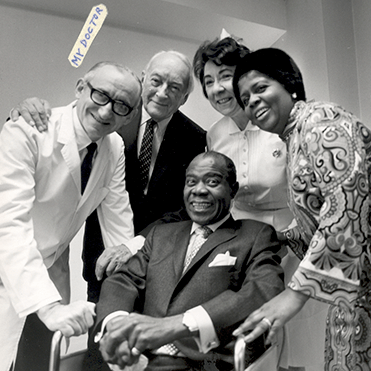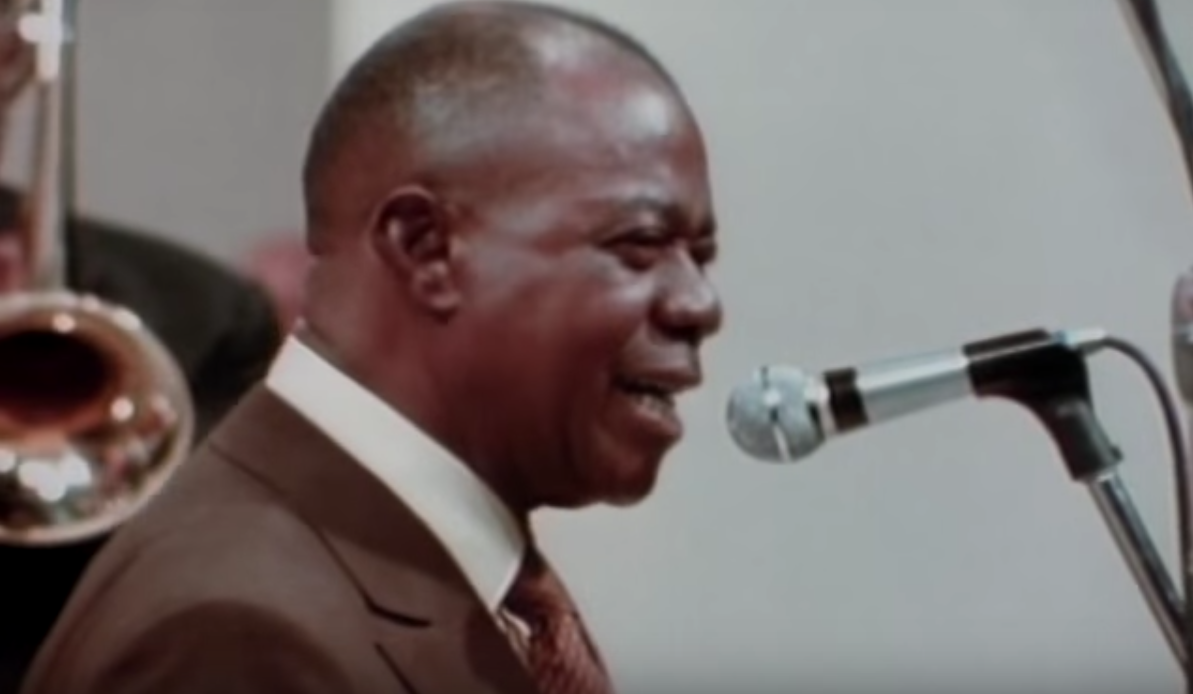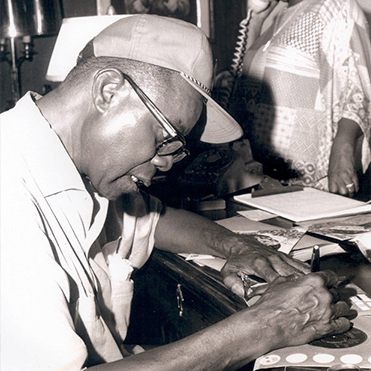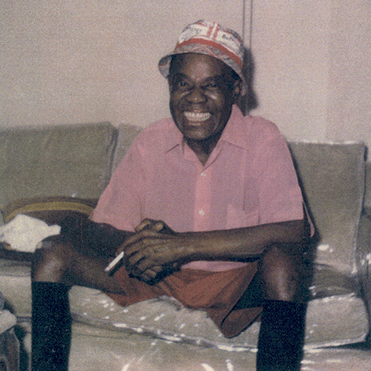Louis Armstrong was born in New Orleans, Louisiana on August 4, 1901. He was raised by his mother Mayann in a neighborhood so dangerous it was called “The Battlefield.” He only had a fifth-grade education, dropping out of school early to go to work. An early job working for the Jewish Karnofsky family allowed Armstrong to make enough money to purchase his first cornet.
On New Year’s Eve 1912, he was arrested and sent to the Colored Waif’s Home for Boys. There, under the tutelage of Peter Davis, he learned how to properly play the cornet, eventually becoming the leader of the Waif’s Home Brass Band. Released from the Waif’s Home in 1914, Armstrong set his sights on becoming a professional musician. Mentored by the city’s top cornetist, Joe “King” Oliver, Armstrong soon became one of the most in-demand cornetists in town, eventually working steadily on Mississippi riverboats.
In 1922, King Oliver sent for Armstrong to join his band in Chicago. Armstrong and Oliver became the talk of the town with their intricate two-cornet breaks and started making records together in 1923. By that point, Armstrong began dating the pianist in the band, Lillian Hardin. In 1924, Armstrong married Hardin, who urged Armstrong to leave Oliver and try to make it on his own. A year in New York with Fletcher Henderson and His Orchestra proved unsatisfying so Armstrong returned to Chicago in 1925 and began making records under his own name for the first time.
Hotter Than That
The records by Louis Armstrong and His Five–and later, Hot Seven–are the most influential in jazz. Armstrong’s improvised solos transformed jazz from an ensemble-based music into a soloist’s art, while his expressive vocals incorporated innovative bursts of scat singing and an underlying swing feel. By the end of the decade, the popularity of the Hot Fives and Sevens was enough to send Armstrong back to New York, where he appeared in the popular Broadway revue, “Hot Chocolates.” He soon began touring and never really stopped until his death in 1971.
The 1930s also found Armstrong achieving great popularity on radio, in films, and with his recordings. He performed in Europe for the first time in 1932 and returned in 1933, staying for over a year because of a damaged lip. Back in America in 1935, Armstrong hired Joe Glaser as his manager and began fronting a big band, recording pop songs for Decca, and appearing regularly in movies. He began touring the country in the 1940s.
Ambassador Satch
In 1947, the waning popularity of the big bands forced Armstrong to begin fronting a small group, Louis Armstrong and His All Stars. Personnel changed over the years but this remained Armstrong’s main performing vehicle for the rest of his career. He had a string of pop hits beginning in 1949 and started making regular overseas tours, where his popularity was so great, he was dubbed “Ambassador Satch.”
In America, Armstrong had been a great Civil Rights pioneer, breaking down numerous barriers as a young man. In the 1950s, he was sometimes criticized for his onstage persona and called an “Uncle Tom” but he silenced critics by speaking out against the government’s handling of the “Little Rock Nine” high school integration crisis in 1957.
Armstrong continued touring the world and making records with songs like “Blueberry Hill” (1949), “Mack the Knife” (1955) and “Hello, Dolly! (1964),” the latter knocking the Beatles off the top of the pop charts at the height of Beatlemania.
Good Evening Everybody
The many years of constant touring eventually wore down Armstrong, who had his first heart attack in 1959 and returned to intensive care at Beth Israel Hospital for heart and kidney trouble in 1968. Doctors advised him not to play but Armstrong continued to practice every day in his Corona, Queens home, where he had lived with his fourth wife, Lucille, since 1943. He returned to performing in 1970 but it was too much, too soon and he passed away in his sleep on July 6, 1971, a few months after his final engagement at the Waldorf-Astoria in New York City.
The Louis Armstrong House Museum
The Louis Armstrong House Museum sustains and promotes the cultural, historical, and humanitarian legacy of Louis Armstrong by preserving and interpreting Armstrong’s house and grounds, collecting and sharing archival materials that document Armstrong’s life and legacy, developing programs for the public that educate and inspire and engaging with contemporary artists to create performances and new works. To learn more:




